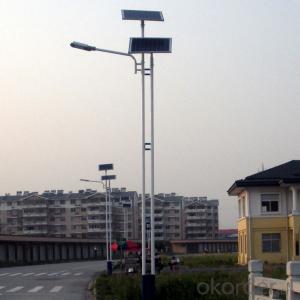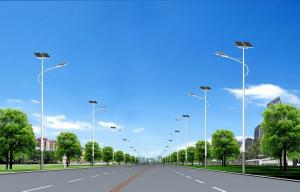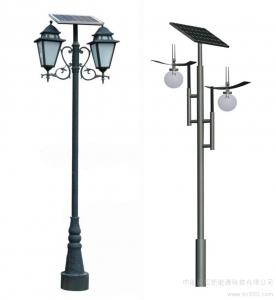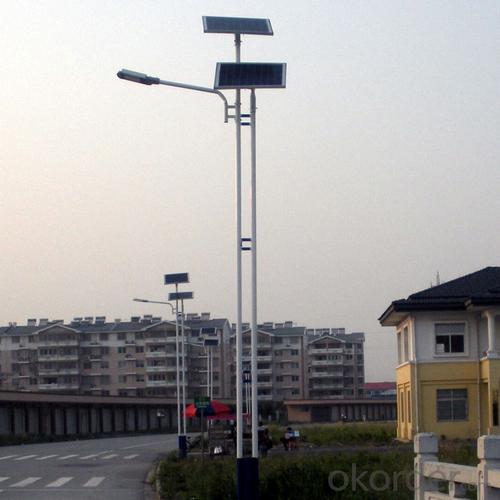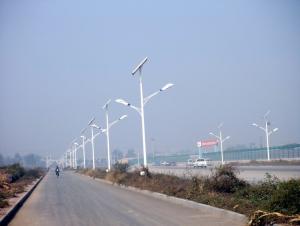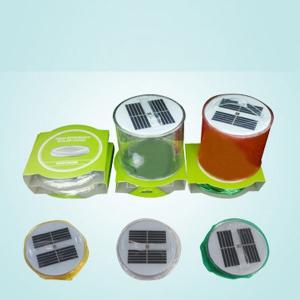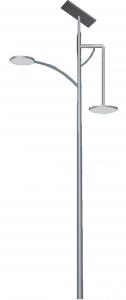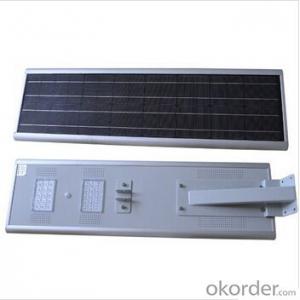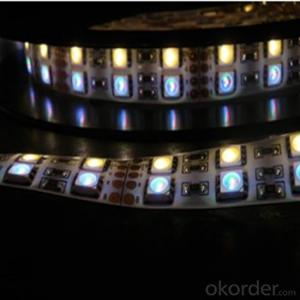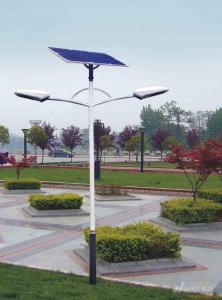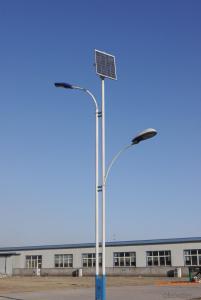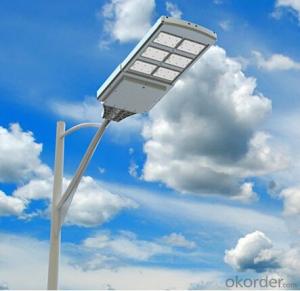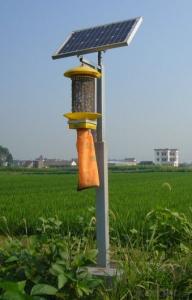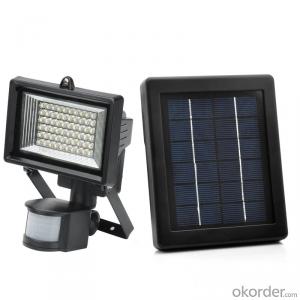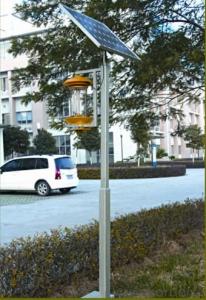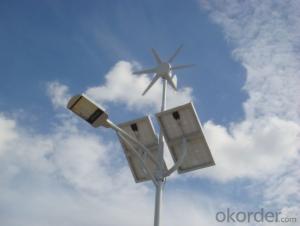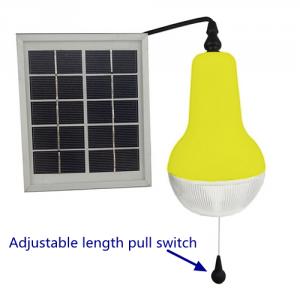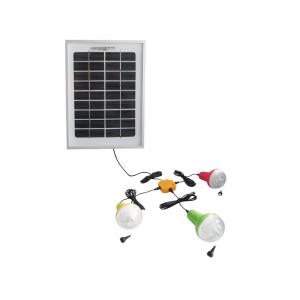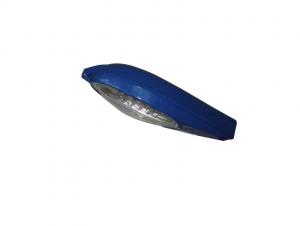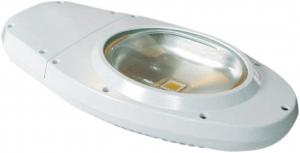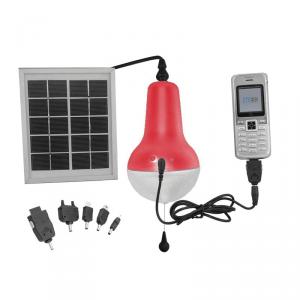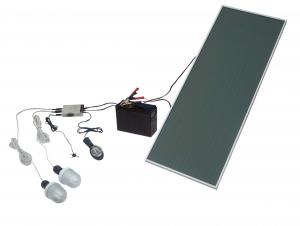Motion Detector Solar Light - High Efficiency JMTL-002
- Loading Port:
- Shanghai
- Payment Terms:
- TT or LC
- Min Order Qty:
- 10 pc
- Supply Capability:
- 10000 pc/month
OKorder Service Pledge
OKorder Financial Service
You Might Also Like
1, Product desciption
Inverter circuits designed to produce a variable output voltage range are often used within motor speed controllers.
The DC power for the inverter section can be derived from a normal AC wall outlet or some other source. Control and feedback circuitry is used to adjust the final output of the inverter section which will ultimately determine the speed of the motor operating under its mechanical load.
Motor speed control needs are numerous and include things like: industrial motor driven equipment, electric vehicles, rail transport systems, and power tools. (See related: variable-frequency drive ) Switching states are developed for positive, negative and zero voltages as per the patterns given in the switching Table.
The generated gate pulses are given to each switch in accordance with the developed pattern and thus the output is obtained.
Solar power is energy from the sun. "Solar" is the Latin word for "sun" and
And Powerful source of energy. Without it, there will be no life.
Solar energy is considered as a serious source of energy for many years
of the vast amounts of energy that is made freely available, if harnessed by modern technology.
A magnifying glass can be used to heat up a small amount of water.
The short piece of copper tube is sealed at one end and filled with water.
And magnifying glass is then used to warm up the pipe.
Using more than one magnifying glass will increase the temperature more rapidly.
2, Features of the product
Inverters convert low frequency main AC power to higher frequency for use in induction heating.
To do this, AC power is first rectified to provide DC power. The inverter then changes the DC power to high frequency AC power. Due to the reduction in the number of DC Sources employed, the structure becomes more reliable and the output voltage has higher resolution due to an increase in the number of steps so that the reference sinusoidal voltage can be better achieved.
This configuration has recently become very popular in AC power supply and adjustable speed drive applications. This new inverter can avoid extra clamping diodes or voltage balancing capacitors. There are three kinds of level shifted modulation techniques, namely: 1,High and stable conversion efficienly based on over 4 years professional experience
2 ,High reliability with guaranteed +/-10% output power tolerance
3,Proven materials,tempered front glass,and a sturdy anodized aluminum frame allow modules to operate reliably in multiple mountily configurations
4,Combination of high efficicncy and attractive appearance
The first thing to figure out is the length of road in need of street lights.
This can be a small entrance road only a couple hundred of feet long to miles of streets through an area. Does the area currently have any type of lighting available.
What is the reason for needing street lights in this area
Is the electrical grid already nearby or would you need to call in the power company to bring in electrical lines.
If the electric needs to be brought to the area, how much is this going to cost? Depending on how far the grid electric is from the location of the needed lighting, this can be quite expensive.
How much lighting is needed on the street? Do the lights need to be dark sky compliant.
Do the street lights need to run from dusk to dawn or for only a specified number of hours at night.
Are the street lights able to dim in the middle of the night and still provide enough lighting.
These questions need to be answered before you can decide on how many lights you will need to complete the project.
3, Detailed Specification
| ||||||||||||||||||||||||||||||||||||||||||||||||
4, Product Image
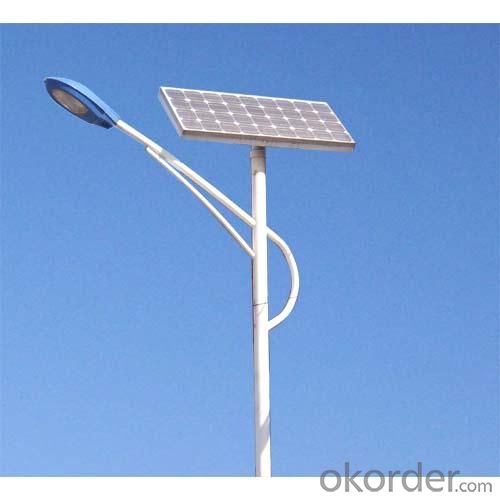
- Q: Can solar lights be used in areas with high levels of saltwater or sea spray?
- Yes, solar lights can generally be used in areas with high levels of saltwater or sea spray. However, it is important to choose solar lights that are specifically designed for such environments. These lights should have appropriate corrosion-resistant materials and waterproofing to withstand the saltwater or sea spray. Regular maintenance and cleaning may also be necessary to ensure optimal performance and longevity in such conditions.
- Q: Can solar lights be used for lighting up outdoor signage or billboards?
- Solar lights can be utilized to illuminate outdoor signage or billboards. These lights offer a sustainable and energy-efficient lighting solution that is easily installed in areas where electricity is scarce or unavailable. By harnessing sunlight and converting it into electrical power, solar lights are able to illuminate LED lights. They are designed to withstand various weather conditions, ensuring durability and longevity, making them ideal for outdoor use. These lights provide ample illumination to enhance visibility and make outdoor signage or billboards easily noticeable, even at night. Furthermore, they eliminate the necessity for complicated wiring or electrical connections, resulting in reduced installation and maintenance expenses.
- Q: Can solar lights be used to light up a large area?
- A large area can indeed be illuminated using solar lights. However, the extent to which solar lights can effectively light up a given area depends on several factors, including the brightness of the lights, the number of lights utilized, and the quality of the solar panels and batteries. Solar lights are designed to capture energy from the sun and convert it into electricity for powering the lights. As long as there is an adequate amount of sunlight during the day, the batteries will be charged by the solar panels, enabling the lights to function at night. To illuminate a large area, it is crucial to select solar lights with higher levels of brightness and consider the strategic placement of multiple lights throughout the area. Furthermore, opting for solar lights with larger solar panels and batteries of higher capacity will ensure that enough energy is stored to illuminate the area for a longer duration. It is worth noting that solar lights may not be as powerful as conventional electric lights, meaning that they might not provide the same level of brightness. However, advancements in solar technology have resulted in the development of more efficient and brighter solar lights, rendering them a feasible choice for illuminating larger areas. Ultimately, the effectiveness of solar lights in illuminating a large area hinges on the specific requirements of the area, the quality of the solar lights, and the availability of sunlight.
- Q: Are solar lights suitable for use in archaeological excavations?
- Yes, solar lights can be suitable for use in archaeological excavations. Solar lights are powered by solar energy, which means they do not require a power source or electricity to operate. This can be particularly beneficial in remote excavation sites where access to electricity may be limited or non-existent. Archaeological excavations often involve working in low-light conditions, especially in underground or enclosed areas. Solar lights can provide a reliable and consistent source of illumination, allowing archaeologists to effectively carry out their work without relying on traditional lighting methods, such as generators or battery-powered lights. Furthermore, solar lights are typically portable and easy to set up, making them ideal for archaeological excavations that may require frequent relocation or movement of lighting equipment. They are also cost-effective in the long run as they do not require ongoing expenses for fuel or batteries. However, it is important to consider the specific requirements of the excavation site and the nature of the archaeological work being carried out. In some cases, solar lights may not provide sufficient brightness or coverage, especially in large excavation areas or when working during nighttime. In such situations, a combination of solar lights and other lighting solutions may be necessary. Overall, solar lights can be a practical and sustainable option for use in archaeological excavations, providing adequate lighting without the need for electricity or constant maintenance.
- Q: How do solar lights handle electromagnetic radiation?
- Solar lights handle electromagnetic radiation by converting it into electrical energy through the use of photovoltaic cells. These cells absorb sunlight and convert it into direct current (DC) electricity, which is then stored in a battery for later use. The electromagnetic radiation from the sun provides the necessary energy for solar lights to function and illuminate outdoor areas.
- Q: Are solar lights resistant to corrosion?
- Yes, solar lights are typically resistant to corrosion because they are specifically designed to withstand outdoor elements such as rain, moisture, and extreme temperatures.
- Q: Do solar lights require a separate power source or battery?
- Yes, solar lights require a separate battery to store the energy converted from sunlight.
- Q: Can solar lights be used in places without electricity?
- Solar lights are capable of being utilized in areas where there is no electricity. These lights function by capturing solar energy and transforming it into electrical energy to activate the light. They are equipped with solar panels that absorb sunlight throughout the day and store the energy in rechargeable batteries. This stored energy is then utilized to power the light during the nighttime hours. As long as there is exposure to sunlight, solar lights can be employed in any location, which makes them especially beneficial in regions with limited or nonexistent access to electrical grids. They represent a sustainable and cost-effective alternative for providing illumination in remote areas, campsites, gardens, pathways, and other locations lacking traditional electricity.
- Q: Can solar lights be installed on walls?
- Yes, solar lights can be installed on walls. They are designed to be easily mounted on various surfaces, including walls, fences, or pillars, using screws or adhesive. This allows for flexible placement and efficient utilization of sunlight for illuminating outdoor spaces.
- Q: Can solar lights be used for outdoor weddings or ceremonies?
- Yes, solar lights can definitely be used for outdoor weddings or ceremonies. They are a great eco-friendly option for adding ambiance and decorative lighting to outdoor spaces. Solar lights come in various styles and designs, including string lights, lanterns, and pathway lights, allowing you to create a beautiful and magical atmosphere for your special event. Additionally, solar lights are easy to install and operate, as they don't require any electrical wiring or access to power outlets.
Send your message to us
Motion Detector Solar Light - High Efficiency JMTL-002
- Loading Port:
- Shanghai
- Payment Terms:
- TT or LC
- Min Order Qty:
- 10 pc
- Supply Capability:
- 10000 pc/month
OKorder Service Pledge
OKorder Financial Service
Similar products
Hot products
Hot Searches
Related keywords
